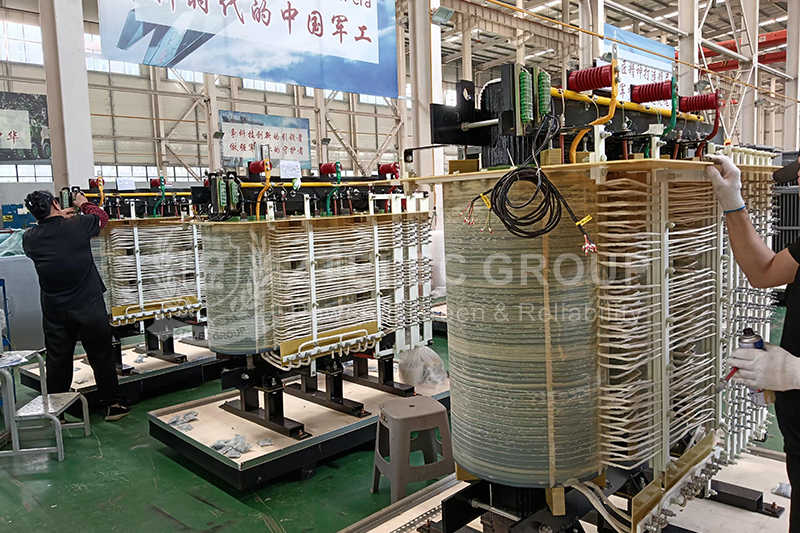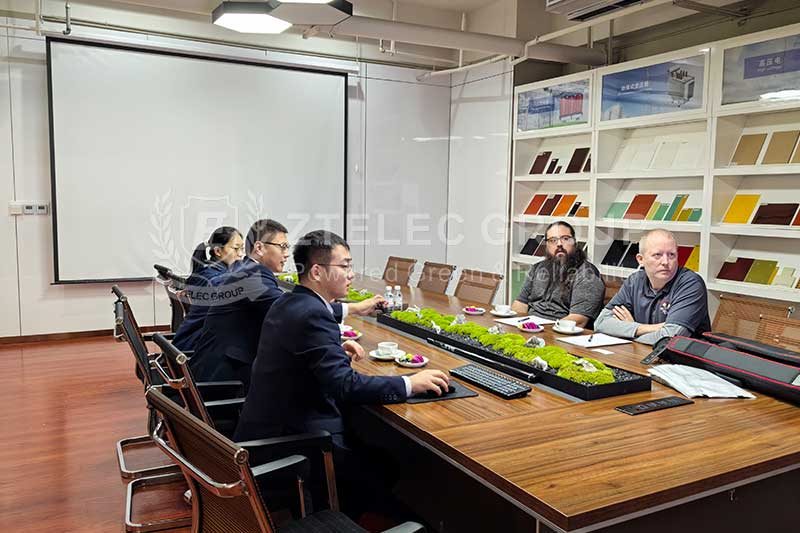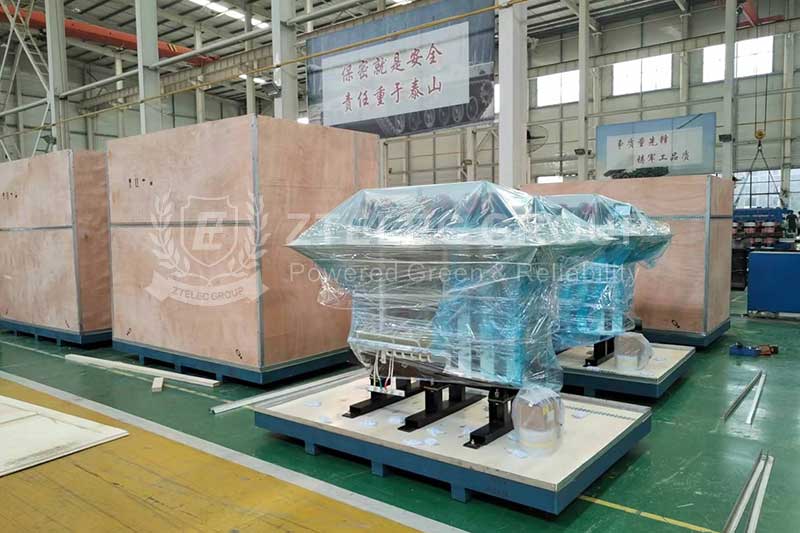What is the Voltage-Boosting Principle of an Oil-Immersed Transformer?
The voltage-boosting principle of an oil-immersed transformer is rooted in the law of electromagnetic induction. Voltage is increased by adjusting the turns ratio between the primary and secondary windings, while the oil-immersed design mainly provides insulation, cooling, and fault protection. Understanding this principle is essential for selecting and applying oil-immersed transformers in power transmission and distribution systems.
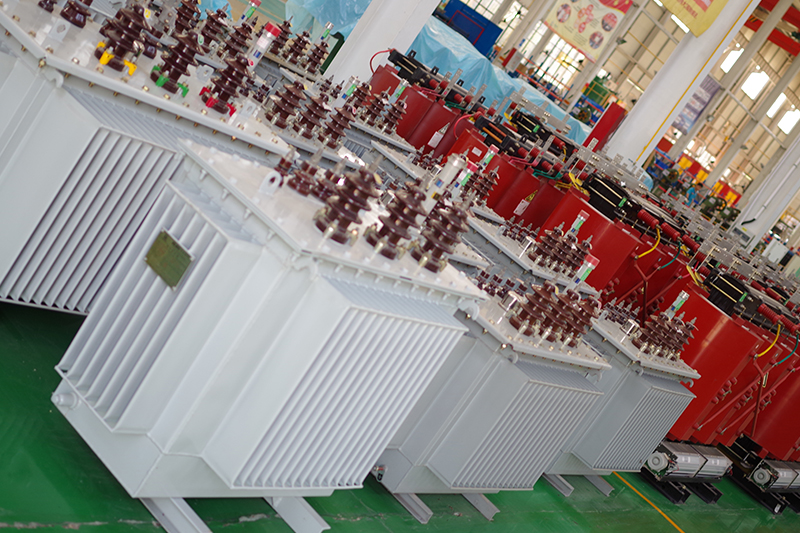
1. Electromagnetic Induction and Voltage Conversion
Electromagnetic induction and the turns ratio form the physical foundation for voltage transformation in all types of transformers. These are the core mechanisms that enable oil-immersed transformers to step up voltage for long-distance transmission or industrial use.
2. The Physical Basis of Electromagnetic Induction
Faraday’s Law: When the magnetic flux in a closed circuit changes, an induced electromotive force (EMF) is generated. This is the essential law behind transformer voltage conversion.
Basic Structure of a Transformer: An oil-immersed transformer mainly consists of an iron core and two sets of windings:
Primary Coil: Connected to the AC power source, also called the low-voltage side in a step-up transformer.
Secondary Coil: Delivers power to the load. In a step-up transformer, this is the high-voltage side.
Iron Core: Made of laminated silicon steel sheets with high magnetic permeability, the core provides a low-reluctance path for magnetic flux, effectively coupling the magnetic field from the primary to the secondary winding.
3. Step-Up Process of an Oil-Immersed Transformer
When the primary winding is energized with AC voltage (U₁), an alternating current (I₁) flows through it. This current generates an alternating magnetic flux (Φ) in the iron core. The flux links both primary and secondary windings, inducing EMFs in each coil according to Faraday’s Law:
E₁ is induced in the primary winding (self-induction), and E₂ is induced in the secondary winding (mutual induction), which becomes the output voltage.
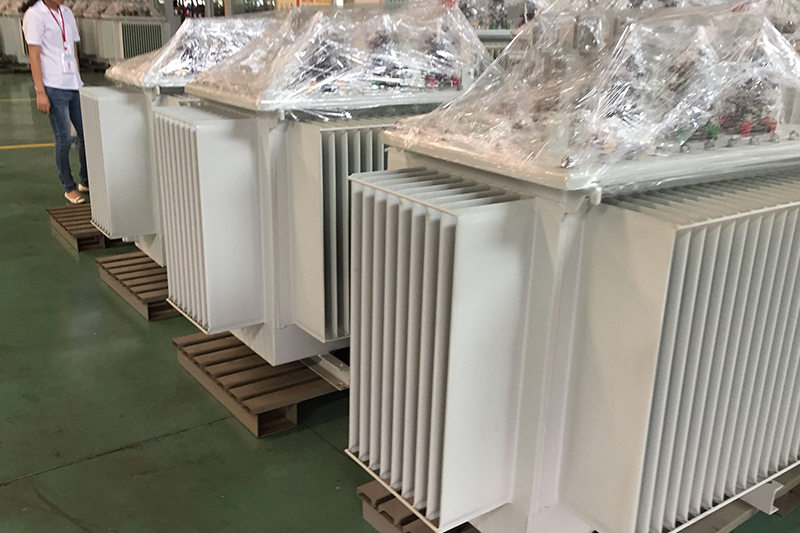
4. Turns Ratio Formula
The mathematical relationship between input and output voltage is expressed by the turns ratio:
U₁ / U₂ ≈ N₁ / N₂
Here, U₁ and U₂ represent the primary and secondary voltages, while N₁ and N₂ represent the number of turns on the primary and secondary windings. In a step-up transformer, N₂ is greater than N₁, so the output voltage U₂ is higher than the input voltage U₁.
5. Role of the Transformer Core
The iron core plays a crucial role in voltage boosting efficiency:
Magnetic Flux Concentration: The silicon steel laminations direct most of the magnetic flux into the secondary winding, reducing leakage and improving efficiency.
Loss Reduction: Insulating varnish reduces eddy current losses, while optimized hysteresis characteristics minimize hysteresis losses, lowering overall iron losses.
6. Supportive Role of the Oil-Immersed Structure
While the oil itself does not directly participate in voltage conversion, it ensures safe and stable operation:
Insulation: Transformer oil has much higher dielectric strength than air, preventing electrical breakdown between high-voltage windings and the transformer casing.
Heat Dissipation: The oil transfers heat from the windings and core to external radiators through natural convection or forced circulation, maintaining safe operating temperatures.
Arc Extinguishment & Moisture Resistance: Transformer oil extinguishes arcs caused by short circuits and prevents moisture from entering, slowing insulation aging and extending service life.
The voltage-boosting principle of an oil-immersed transformer is achieved through electromagnetic induction and the turns ratio of its windings. By designing the secondary coil with more turns than the primary, the transformer outputs a higher voltage than the input. Meanwhile, the oil-immersed structure enhances insulation, cooling, arc suppression, and moisture resistance, ensuring reliable operation in high-voltage, high-power environments. This makes oil-immersed transformers indispensable for long-distance power transmission and voltage regulation in modern power systems.
- more+releated article
- 2025-12-13How to Select and Use Phenolic Cloth-base Lami
- 2025-12-13How Much Does Bakelite Sheet Cost? 2025 Price
- 2025-12-13Why are most 3240 epoxy boards yellow?
- 2025-12-13What are the Main Applications of FR4 Epoxy Bo
- 2025-12-13Why Does the Price of Insulating Paperboard Va
- 2025-12-13Heat-Resistant DDP Insulation Paper
- 2025-12-13Comparison of Heat-Resistant DDP Insulating Pa
- 2025-12-13G10 and FR4 Epoxy Boards: Commonly Used for Ge
- 2025-12-13The Price of Heat-Resistant DDP Insulation Pap
- 2025-12-13How to Choose Epoxy Laminate Materials for Gen

